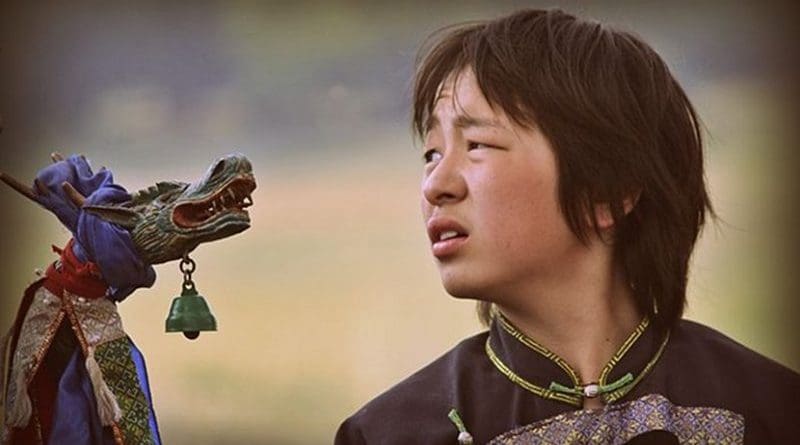Moscow’s Past Manipulations Of Buryatia Spark Fears Among Its Residents About Future
By Paul Goble
A recent article in an Ulan-Ude newspaper about how Moscow has played with the name and borders of the Buryat Republic in the past has sparked concerns in that Buddhist region in the Trans-Baikal that Russia’s moves against the use of the title of president by republic leaders may presage yet another diminution of the status of the Buryats.
In May 1923, Yevgeny Khamaganov writes in “Vechernyy Ulan-Ude-Nedeli,” Moscow set up the Buryat-Mongol Autonomous Soviet Socialist Republic.
In 1937, it split the territory of the republic into five parts – an autonomous republic, two districts, and two parts in Irkutsk and Chita oblasts – and changed its name (buryat-mongolia.info/?p=1217).
As the Buryat journalist points out, both the establishment and the dismemberment of Buryat statehood within the Russian Federation was accompanied by “backstage intrigues,” the details of which remain in some cases unclear and in others in dispute to this day. Nonetheless, the basic outlines of what has happened are clear – and for Buryats, disturbing.
The history of Buryat statehood began in April 1917 when an All-Buryat congress took place in Chita and called for the formation of a Buryat Mongol state within Russia. The meeting formed a Central National Committee of Buryat Mongols of Eastern Siberia with its headquarters in Chita rather than Verkhneudinsk.
That body, during the Russian civil war, was renamed the Buryat Mongol People’s Duma. It was controlled by anti-bolshevik leader Ataman Semyonov, the first of many instances where the Buryats were used by outsiders whose policies toward that nation were determined by their geopolitical concerns rather than the national interests of the Buryats.
Later, Semyonov and his nominal subordinate Baron Ungern-Sternberg, set up a Dauria government of Buryats which attempted to unify Buryat-Mongolia with Khalkha-Mongolia and Internal Mongolia of China, an idea that was pushed by the Japanese who were the chief backers of Semyonov.
As the Russian Civil War wound down, Moscow created the Far Eastern Republic as a bugger between Soviet Russia and Japan. When that buffer was no longer required, a debate broke out between Russian communists who didn’t want to give the Buryats any autonomous formation and Buryats who insisted on them. Moscow backed the latter.
But its reasons for doing so appear to have been the product of a desire to attract and possibly absorb Outer Mongolia and Tannu-Tuva into the USSR, something that Moscow did de facto in the case of the former by the 1930s and de jure in the case of latter at the end of World War II.
Indeed the name Buryat-Mongol exactly paralleled Karelo-Finia in that regard.
But when the central Soviet government no longer needed this tool and when in fact Stalin’s suspicions were aroused that Mongols abroad might use a Buryat-Mongol republic within the USSR against him, perhaps by blocking the Transbaikal, he changed its name and divided its territory into five parts.
The Soviet leader staged a show trial accusing the Buryat leader of pan-Mongolism on behalf of Japan, and after the war, he conducted a second massive purge of the republic’s officials supposedly because they had wanted to see Japan win the war in the Far East and regain their statehood.
He didn’t deport the Buryats only because “there was nowhere to send them.”
In a postscript to his article, Khamaganov underlines that “up to now,” Buryatia remains of interest to foreign powers like China and the United States” and argues that because of that, “it is possible that [Buryats] may become witnesses” of another turn of the historical cycle, especially given Moscow’s moves against the national republics.
The Ulan-Ude journalist’s article provides few pieces of information that are not known to Western specialists, but it is important both as an indication of Buryat sensitivities, especially given the reactions of some of those who posted comments on it on the Buryat-Mongolia.info site.
One said that whatever else might be done, “Buryatia should [re]take its real name – BURYAT MONGOLIA.” Another implied that Ireland’s acquisition of independence from Great Britain should be a model for Buryatia. And a third said that Buryatia should once again become an integral republic, reclaiming all the parts Moscow took from it in the past.
But perhaps the most interesting comment was offered by one Buryat who asked “Does it not seem to you than soon an end is coming to all autonomies and not only to the titles of their ‘leaders’? THERE plans have already been worked up for a long time and attempts have been made to realize them as in the case of the [Buryat] autonomous districts.”
Moreover, he continues, Moscow officials “have tried several times to liquidate the republics – the Altay Republic, Adygeya … Now, we see that the Muscovites have begun to act more cleverly – at first they take the titles away from the heads of the republics and over time they will liquidate the autonomies as well.”

